LEAH CONWAY
Guest Blogger
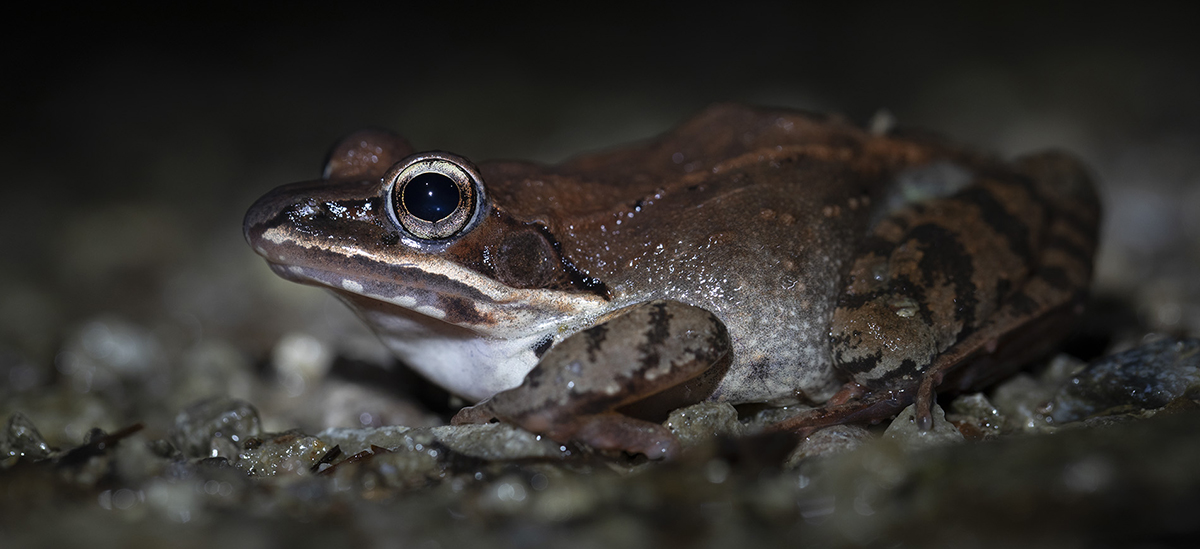
Ohio’s most terrestrial frog may not be seen as readily as a common bullfrog, but they too undergo an exciting metamorphic process. Wood frogs will betray their land-loving nature temporarily in the spring to journey from their moist woodland homes to a vernal pool for mating purposes, and there they may be found in the dozens and heard making their courtship calls in the hundreds.
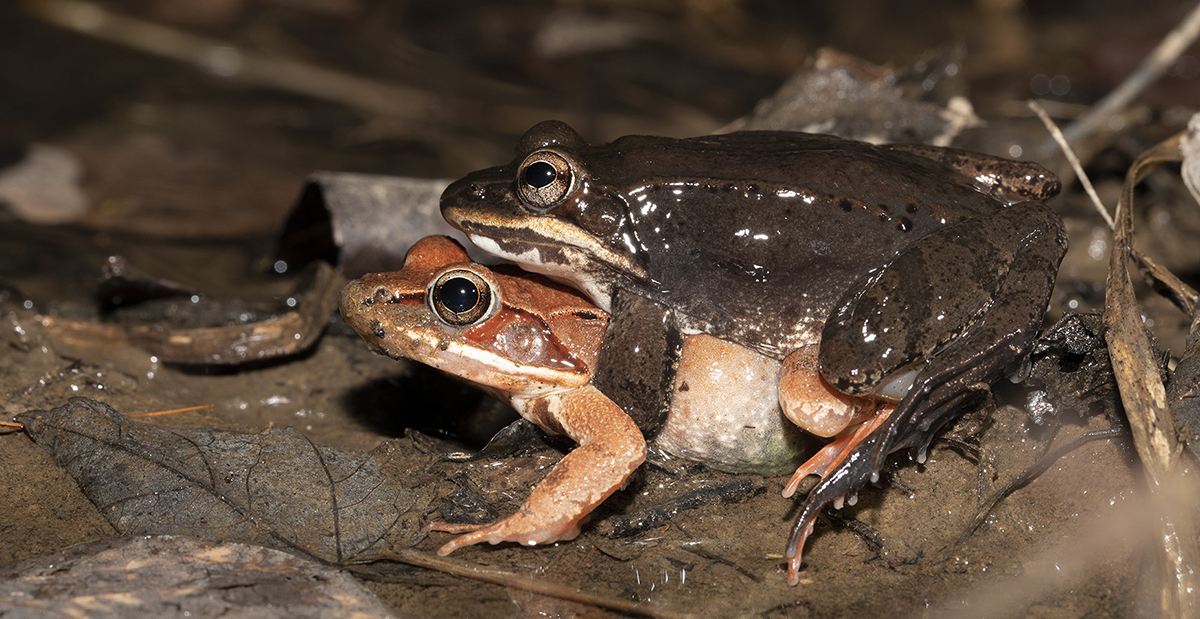
Amphibians such as wood frogs and salamanders make their nocturnal mass migrations to these seasonal pools as early as late February so long as the temperature is above 50 degrees and it’s raining. The seasonal nature of vernal pools affords their eggs and larvae safety, because predatory fish won’t be found in a body of water that isn’t wet all year round.
There, a female will lay hundreds or even thousands of eggs clustered together.
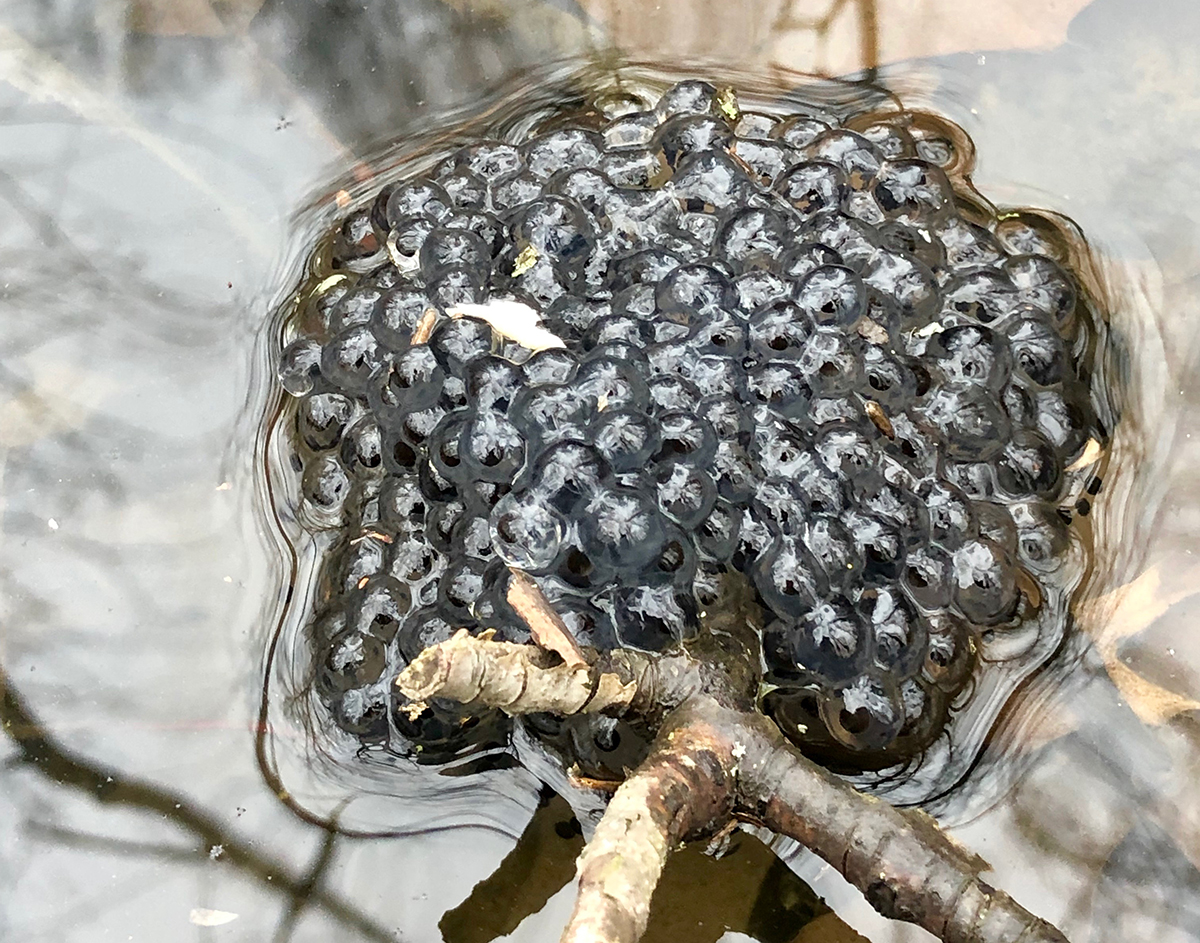
The eggs will hatch nine to 30 days later. As tadpoles, wood frogs will eat algae and rotting vegetation found in the water, growing until they gain their legs and lose their tail in late summer to become adult frogs.
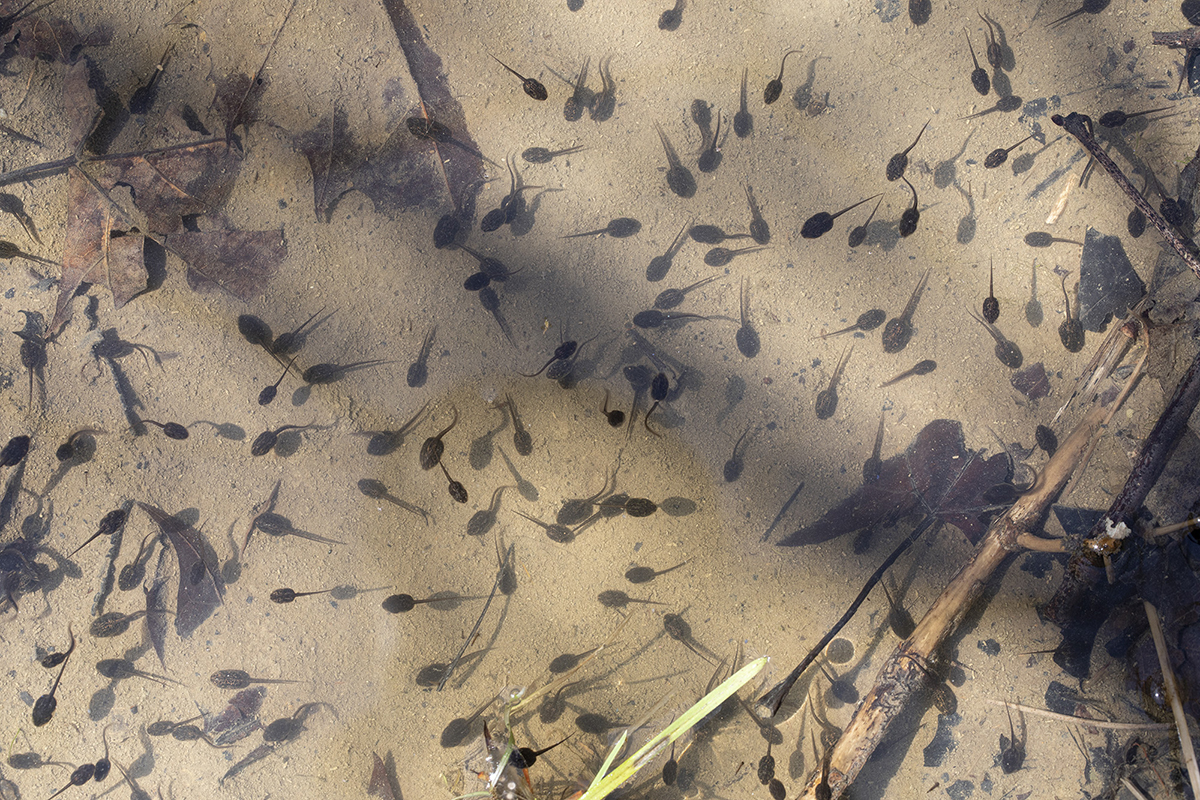
After spending the rest of summer and fall consuming insects, worms, slugs, and snails, they’ll prove themselves as the hardiest of our frogs come winter. Thanks to a special substance (glucose) in their bodies that acts a lot like antifreeze, they can survive being frozen solid! Their heart and breathing even stop, but the glucose keeps their organs and tissues safe by preventing ice crystals from forming and damaging them. They can remain like this for up to eight months, and this adaptation means they can be found much farther north than any other frog species.
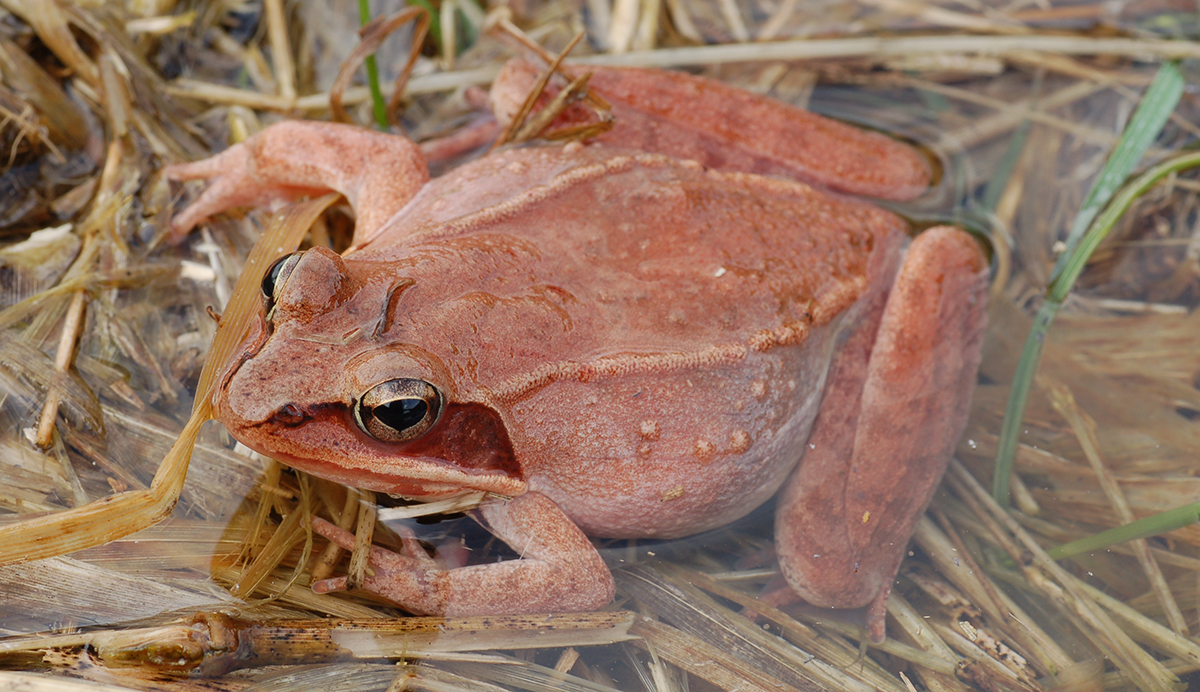

i found this so interesting, as i’ve learned to look forward to their late-winter quacking. so, i know we have some around, but the couple depressions that i’ve called vernal pools dry, or at least don’t have visible standing water by late spring. doesn’t that doom the tadpoles?